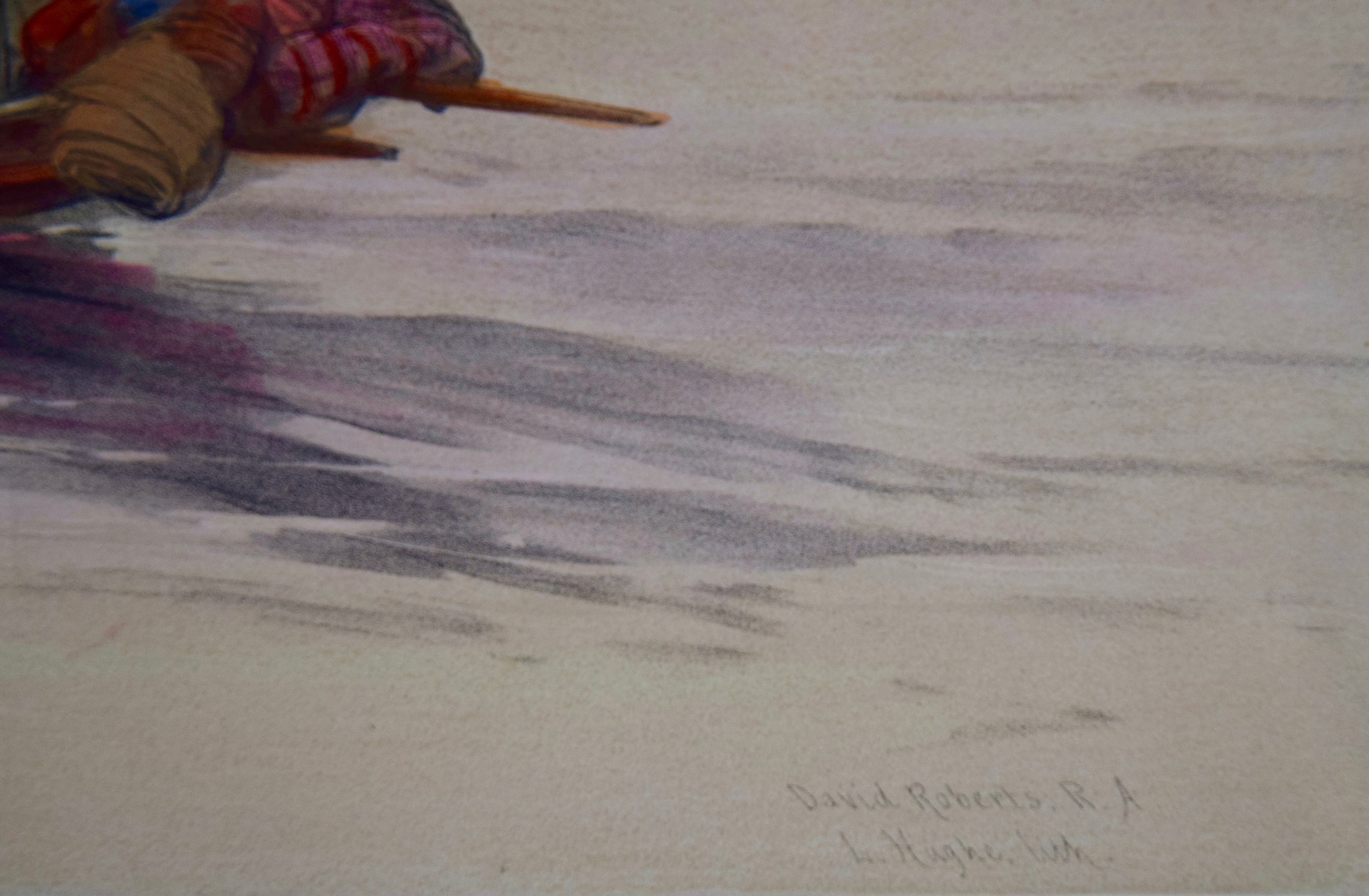Cairo with Murad Bey's Palace: A Hand-colored Aquatint & Engraving by L. Mayer
This is a hand-colored aquatint and engraving entitled "Principal Square in Grand Cairo, with Murad Bey's Palace", published in London by R. Bowyer in 1801. The print was created by Thomas Milton (1743-1827) from drawings by Luigi Mayer.
Creator: Luigi Mayer (1755 - 1803, Italian)
Creation Year: 1801
Dimensions: Height: 22.25 in (56.52 cm)
Width: 17.5 in (44.45 cm)
Depth: 1 in (2.54 cm)
Medium: Engraving, Aquatint
Condition: See description below.
This is a hand-colored aquatint and engraving entitled "Principal Square in Grand Cairo, with Murad Bey's Palace", published in London by R. Bowyer in 1801. The print was created by Thomas Milton (1743-1827) from drawings by Luigi Mayer.
Creator: Luigi Mayer (1755 - 1803, Italian)
Creation Year: 1801
Dimensions: Height: 22.25 in (56.52 cm)
Width: 17.5 in (44.45 cm)
Depth: 1 in (2.54 cm)
Medium: Engraving, Aquatint
Condition: See description below.
This is a hand-colored aquatint and engraving entitled "Principal Square in Grand Cairo, with Murad Bey's Palace", published in London by R. Bowyer in 1801. The print was created by Thomas Milton (1743-1827) from drawings by Luigi Mayer.
Creator: Luigi Mayer (1755 - 1803, Italian)
Creation Year: 1801
Dimensions: Height: 22.25 in (56.52 cm)
Width: 17.5 in (44.45 cm)
Depth: 1 in (2.54 cm)
Medium: Engraving, Aquatint
Condition: See description below.
This beautiful, detailed, original engraving is printed on wove paper with very wide upper, left and right margins. The sheet measures 12" high and 17.63" wide. There is a tiny spot in the lower margin on the left. The engraving is otherwise in excellent condition with vibrant colors.
"The Pool of Bethesda is referred to in John's Gospel in the Christian New Testament, (John 5:2) in an account of Jesus healing a paralyzed man at a pool of water in Jerusalem, described as being near the Sheep Gate and surrounded by five covered colonnades or porticoes. It is also referred to as Bethzatha. It is now associated with the site of a pool in the current Muslim Quarter of the city, near the gate now called the Lions' Gate or St. Stephen's Gate and the Church of St. Anne, which was excavated in the late 19th century." Wikipedia
Luigi Mayer (1755-1803) was an accomplished water-colorist and draughtsman, and is renowned as the most accurate delineator of Egypt and Palestine prior to David Roberts. He was commissioned by Sir Robert Ainslie, the British ambassador to Constantinople, 1776–1792, then the capital of the Ottoman Empire. Mayer traveled widely in Palestine, Egypt, and present-day Turkey. He focused on the architecture, costumes, and landscapes of the region. Thomas Milton, the engraver and colorist, captured much of the rich earth tones and atmosphere of the region. In addition to "An Egyptian Bey", Mayer's creations included views of the Egyptian pyramids at Gizah, the Sphinx, Pompey’s Pillar, Rosetta, Alexandria, Cairo, Cacamo, Macri, Rhodes, Cyprus, Corinth, Carthage, the Triumphal Arch at Tripoli, Jerusalem, Bethnay and the Dead Sea, and Bethlehem, as well as costume plates of Mamalukes, an Arab Sheik, Egyptian dancing girls and peasants, Bedouins, and Caramanians.































